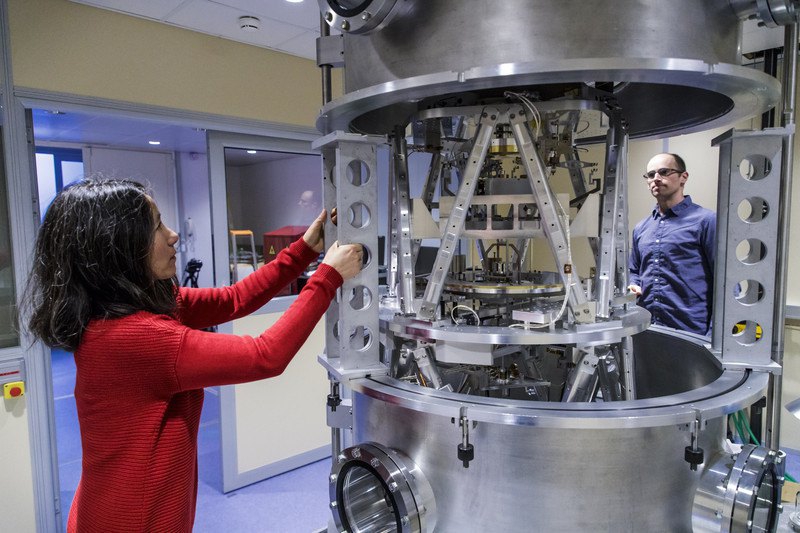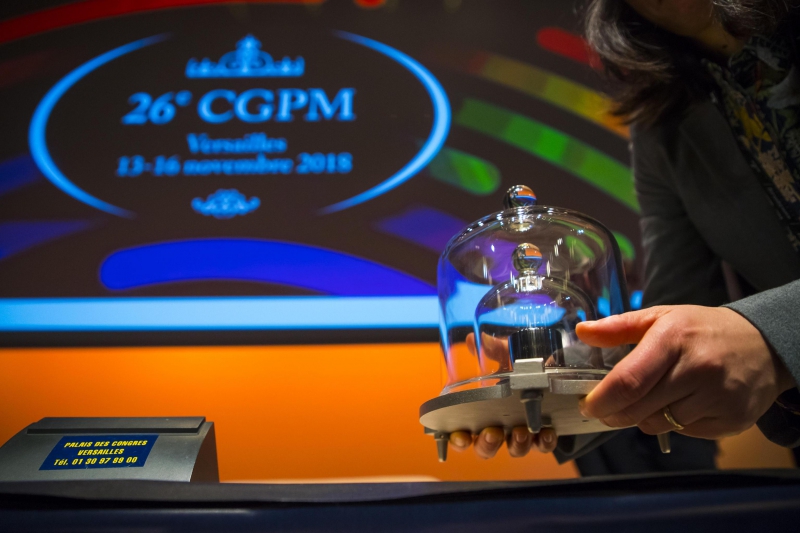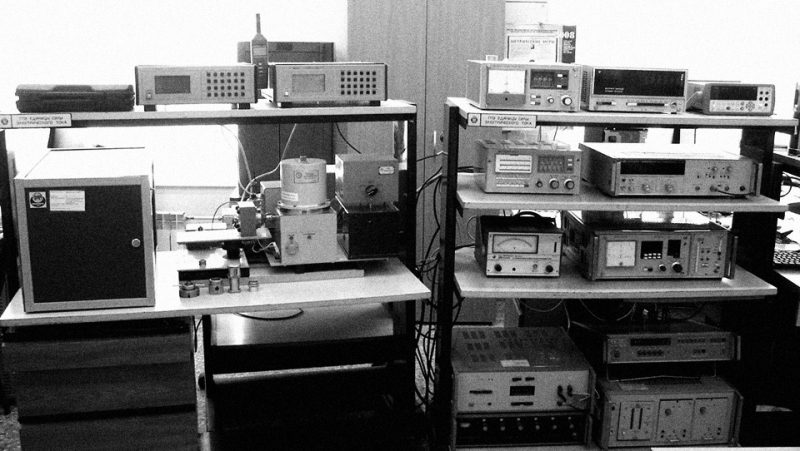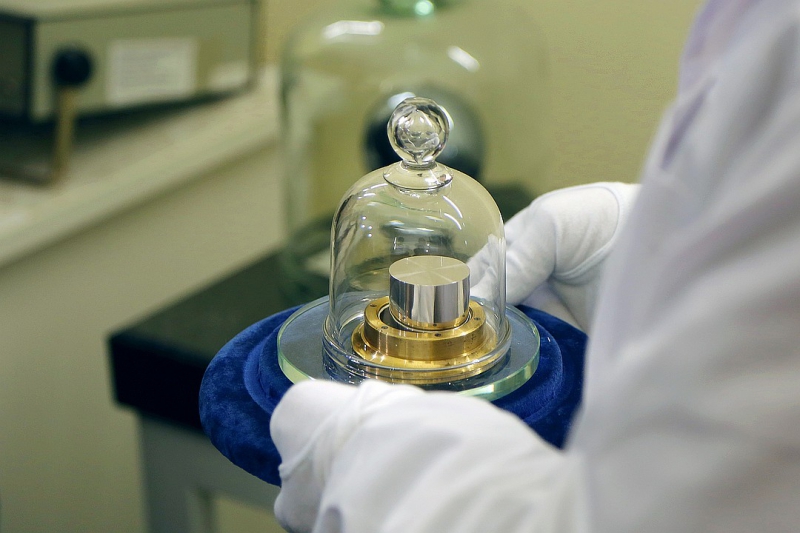Until recently, kilogram as a unit of measurement was dependent on a man-made artifact, a platinum alloy cylinder stored in France, copies of which have been distributed all over the world. These copies, in turn, have also been copied. After comparing a number of these local copies, experts have found weight deviations in the range of ±50 micrograms over a 100 years; there is no way to check how much the mass of the original prototype has changed because there isn’t anything to compare it to. But even miniscule discrepancies such as this can have a disastrous effect on many processes.
“The mass and length standards were put in place at a time when people had no idea we’d be one day able to make these uber-precise measurements. They also didn’t know how deeply scientists would dive into the world of ultra-small and ultra-large units and scales. The discoveries made in 20th-century physics have changed our perception of the world, and our capabilities have grown immeasurably. That’s why there is a need to connect the base measurements, used by scientists all over the world, to the fundamental laws and constants discovered in the 20th century. The scientific community had spent decades mulling over how to best introduce these changes, and now the choice has finally been made,” says Alexey Shcherbakov, a researcher at ITMO University’s Nanophotonics and Metamaterials Research Center.

The new standard of a kilogram is based on the Planck constant. The device used to calculate it is called the Kibble balance. Just like any other weighing device, its main principle hinges on the counter-balancing of two forces. But what makes this one special is that the weight of a measured object is compensated by the Lorentz force, which is the force exerted by an electromagnetic field on an electric conductor inside said field.
“Until now, we’ve based our measurements and calculations on laws that are over a century old. The quantum laws, however, were much more useful in the field of super-precise measurement of current. These laws are made evident when we work with infinitesimal amounts of matter, energy or radiation, and it turns out that these amounts can change not constantly but by fractions of some minimal units that depend on the Planck constant. The mass of one kilogram is directly tied to the value of the Planck constant. When they redefined the standard, scientists determined that value with a margin of error of fewer than 50 parts to a billion, and decided that from now on, the mass will be calculated based on that value and Kibble balance measurements,” explains Alexey Shcherbakov.

The soon-to-retire cylinder will be replaced by another physical standard, calculated according to the new laws. It is a perfectly round sphere of single-crystal silicon. The use of silicon spheres is an alternative to using a Kibble balance based on another fundamental constant, the Avogadro number.
Using the new definition of a kilogram, every nation will be able to reproduce the standard independently without needing a singular, global prototype. According to Alexey Shcherbakov, while this is theoretically true, in practice precise measurements using the Kibble balance involve a complex process that needs to be carried out by scientists of the highest qualification. For that reason, most countries will continue to use physical standards in everyday applications.
The decision made at the 26th General Conference on Weights and Measures brought an end to the reform that lasted decades. In 1983, the definition of a meter was tied to the speed of light in vacuum. In 2005, another three constants were used as a basis for new definitions of other units. The Planck constant was used for the kilogram, the elementary electric charge for the unit of electric power, and the Boltzmann constant for the unit of measurement of thermodynamic temperature. It took several years to complete that transition by producing ultra-precise measurements of each constant.

“What makes it extremely difficult to make these measurements is that you have to take into account the effect of every possible aspect, from temperature to the vibrations of walls in a lab. The scientists have to make sure that every element of their equipment is stable, and that measurements are made repeatedly over a period of time. In the case of the kilogram, they also had to compare the results produced by research labs all over the world,” explains Shcherbakov.
Ampere, kelvin and mole
In addition to the kilogram, new definitions of three other units have been approved during the 2016 conference.
The old definition of the ampere, which was put in place in 1948, was based on the measurement of force that affects parallel electric conductors. This time around, scientists have decided to use the numerical value of an electric charge as the basis for the new definition of ampere.
Until today, the kelvin was defined as the 1/273.16 of the temperature of the triple point of water. This definition had its own drawbacks, as water always contains impurities in the form of heavy isotopes of oxygen and hydrogen, which affect the triple point value. Metrologists were even forced to create a new standard: the Vienna Standard Mean Ocean Water. The new definition of kelvin is based on the Boltzmann constant, which is always equal to 1.38064852 × 10-23 m2 kg s-2 K-1.
The mole was previously tied to the number of atoms in 0.012 kilograms of stable carbon-12. In the new version of SI, it will be defined via the Avogadro constant, equal to 6.02214086 × 1023 particles.
The changes will come into force on the World Metrology Day, May 20, 2019.





